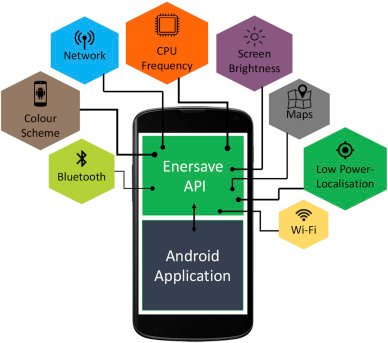
Creating an Android battery saver system is a practical and useful project. Here’s a step-by-step guide to help you get started:
Define Battery Consumption Factors:
- Identify key factors that contribute to battery consumption on Android devices, such as screen brightness, background processes, network usage, etc.
Data Collection:
- Gather data on battery usage patterns from various Android devices.
- Use Android’s Battery Historian or other tools to analyze battery consumption.
User Interface (UI):
- Design an intuitive user interface for your battery saver app.
- Include features like toggles for different battery-saving modes, real-time battery status, and historical usage information.
Battery Saving Modes:
- Implement different battery-saving modes with varying levels of restrictions.
- Consider modes that adjust screen brightness, limit background processes, and disable certain features when the battery is low.
Optimized Charging:
- Implement optimized charging algorithms to prolong battery lifespan.
- Consider features like slow charging during nighttime or adaptive charging based on usage patterns.
Background Process Management:
- Develop a system to manage and limit background processes and services.
- Identify and prioritize processes that significantly impact battery life.
Screen Brightness Control:
- Include an adaptive screen brightness control mechanism.
- Utilize sensors to adjust screen brightness based on ambient light conditions.
Network Optimization:
- Implement features to optimize network usage, such as intelligent syncing of data or reducing background data usage.
User Notification:
- Notify users about their battery status, recommended actions, and potential battery-draining apps.
- Provide suggestions on optimizing settings for better battery life.
Task Automation:
- Implement automated tasks or schedules for activating/deactivating battery-saving modes.
- Allow users to customize automation rules based on their usage patterns.
Testing:
- Test your battery saver system on various Android devices with different versions of the operating system.
- Evaluate its impact on battery life and performance.
Security Measures:
- Ensure that your app follows Android security guidelines.
- Implement secure practices, especially if your app requires access to sensitive information.
Documentation:
- Document your project thoroughly, including the algorithms used, UI/UX decisions, and testing results.
User Feedback:
- Collect feedback from users to improve the app’s effectiveness and user experience.
- Consider implementing analytics to track user behavior and app performance.
Building an Android battery saver system requires a good understanding of Android development, power management, and user experience. Best of luck with your project!
